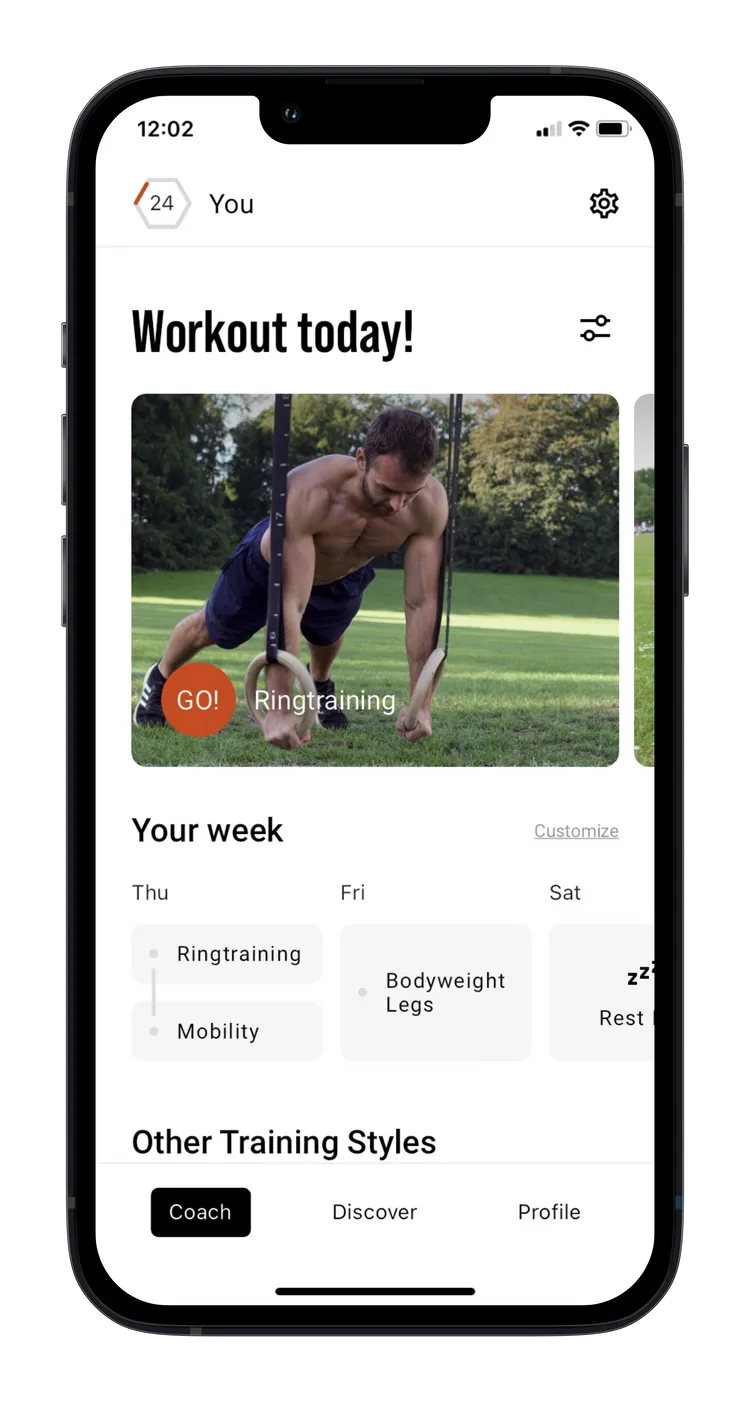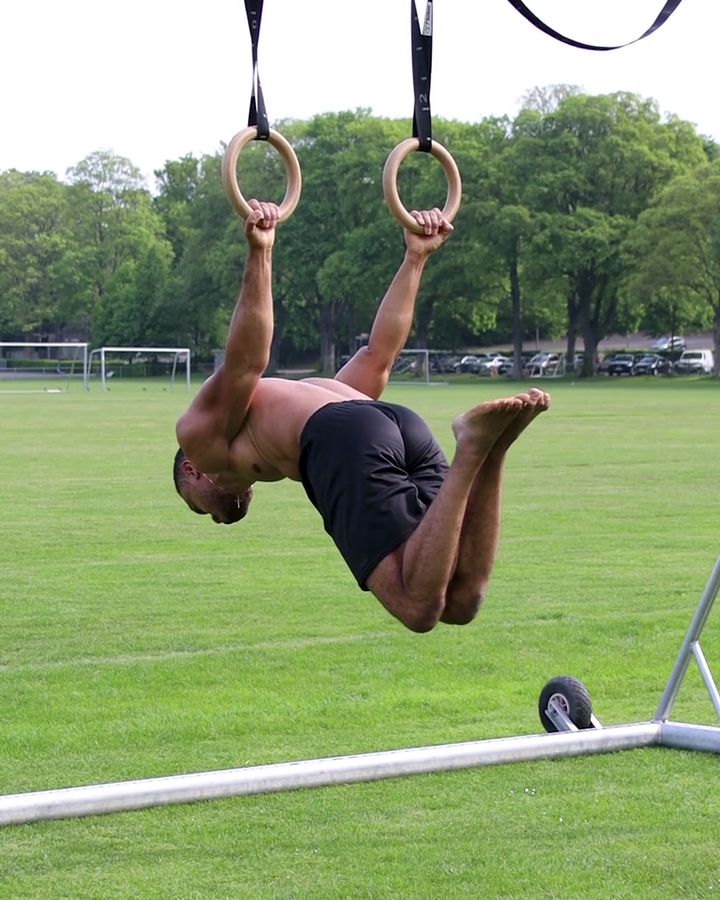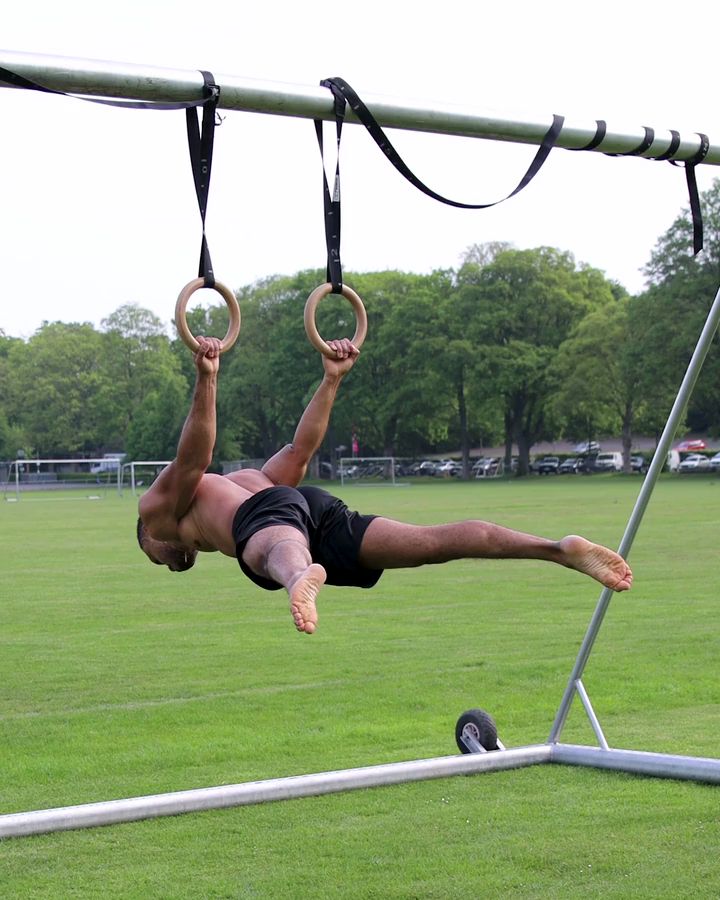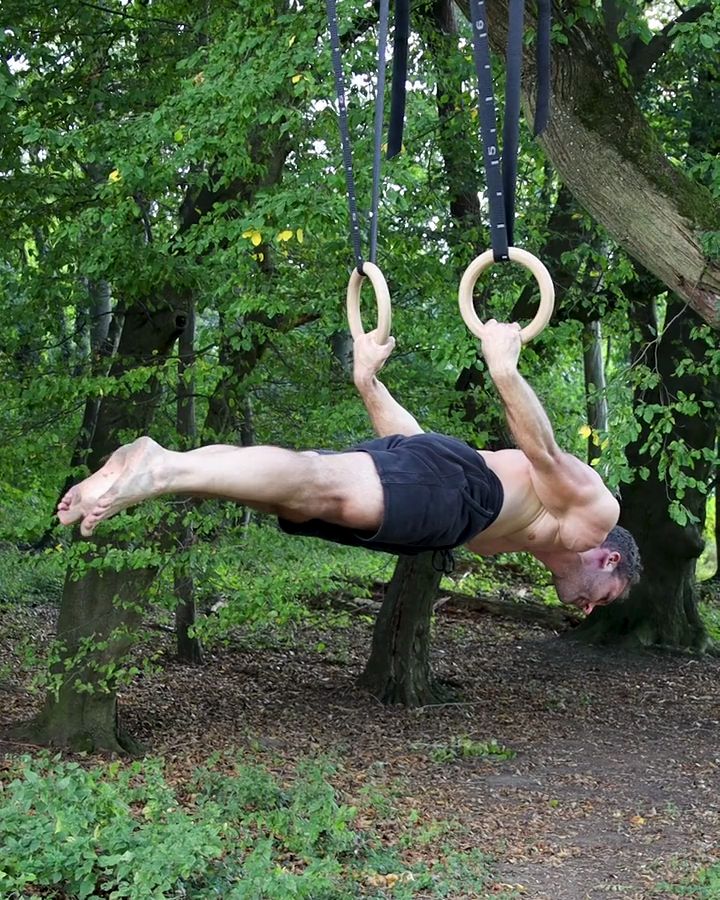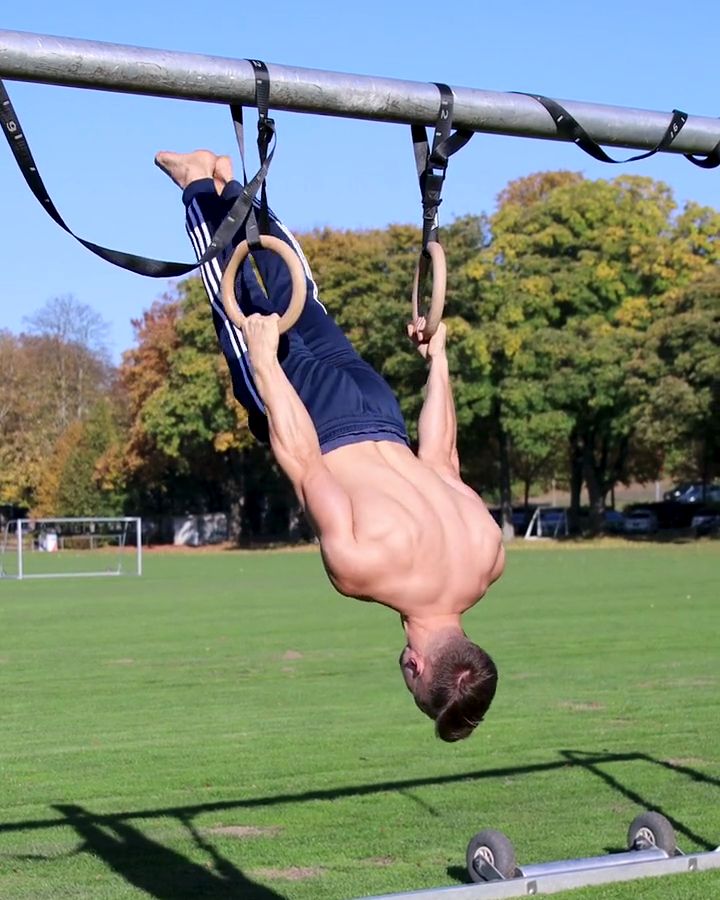Tuck Back Lever with gym rings
The tuck back lever is an advanced calisthenics exercise that challenges the entire upper body, especially the lower back, front shoulders, chest, and biceps. Unlike the straight back lever, the body is held in a tucked position here, which reduces the difficulty level—making it ideal as preparation for the full back lever.
The next progression levels are the one leg back lever and the straddle back lever, where the legs are spread apart, eventually leading to the full load in the full back lever.
Necessary equipment
Tuck Back Lever with gym rings - the correct execution
- Begin in an inverted hang with your arms straight
- Pull your knees toward your chest
- Activate your abdominal and glute muscles to stabilize your body
- Try to keep your arms straight and actively contract your biceps
- Lean your body back into a horizontal position
- Hold your hands in the position that feels most comfortable for you, whether palms facing forward (pronation) or backward (supination)
- Ensure that your calves are parallel to your upper body and your thighs remain close to your torso
- Control your movement back to the inverted hang or lower your feet to the ground to finish the exercise
The exercise Tuck Back Lever is intended to be used as a hypertrophy, technique exercise.
Which muscles are trained by Tuck Back Lever?












Primary trained muscles for Tuck Back Lever
Front Delts - The front part of the deltoid muscle, also known as the anterior shoulder, is located at the front of the shoulder. It is primarily involved in the forward movement of the arm, such as lifting the arm forward. It also assists in the internal rotation of the arm. This muscle is engaged in activities that involve lifting objects in front of the body or pushing forward.
Biceps - The biceps brachii muscle is located on the front of your upper arm. It helps you bend your arm at the elbow, rotate your palm upwards, and lift your arm forward.
Secondary trained muscles for Tuck Back Lever
Lower Back - The erector spinae muscle runs along your spine and helps you extend your back and stand upright.
Side Delts - The lateral part of the deltoid muscle, also known as the lateral shoulder, is located on the outside of the shoulder. It is the main muscle responsible for lifting the arm sideways. The lateral shoulder is particularly active when the arm is extended away from the body, such as during lateral raises or lifting objects to the side. It plays a key role in arm abduction and shoulder stabilization.
Chest - The pectoralis major muscle is the large muscle on your chest. It helps you bring your arm towards your body and rotate it inward.
Alternative variants of Tuck Back Lever with gym rings:
Advanced Tuck Back Lever
The advanced tuck back lever with open hips is an intermediate stage between the tuck back lever and the one leg back lever. In this position, the legs remain bent while the hips are more open, increasing the load on the lower back, shoulders, chest, and biceps. This position requires more strength and stability in the shoulder girdle, as the extended lever arm from the open body posture demands greater effort.
Necessary equipment
Advanced Tuck Back Lever - the correct execution
- Begin in an inverted hang with your arms straight
- Bend your knees and lift them until your hips form a 135-degree angle
- Activate your abdominal and glute muscles to stabilize your body
- Try to keep your arms straight and actively engage your biceps
- Lean your body back into a horizontal position
- In the final position, attempt to elongate your torso and straighten your spine
- Hold your hands in the position that feels most comfortable for you, whether palms facing forward (pronation) or backward (supination)
- Ensure that your hips maintain the 135-degree angle
- Control your movement back to the inverted hang or lower your feet to the ground to finish the exercise
Similar exercises to Tuck Back Lever
Straddle Back Lever with gym rings
The Straddle Back Lever is a progression exercise in calisthenics that prepares you for the full Back Lever. In this variation, the legs are spread apart to reduce the lever arm, making the exercise easier compared to the full version.
This exercise requires strength in the shoulders, chest, biceps, and lower back. Proper technique is essential: keep your core, glutes, and arm muscles engaged to prevent injuries and perform the exercise effectively.
Back Lever with gym rings
The back lever is a calisthenics exercise where the body is held horizontally with the stomach facing the ground. It requires strong body tension and primarily trains the biceps, shoulder, and core muscles. The back lever particularly challenges stability and body control and demands both strength and flexibility in the arms and shoulders. This advanced exercise requires patience and consistent training.
To prepare, various progressions are recommended: The tucked back lever is a basic exercise where the knees are pulled to the chest to strengthen the core muscles. The straddle back lever and the single-leg back lever are more advanced variations, where spreading or extending the legs increases the load. Exercises like back lever pulls help further develop the necessary strength and stability in the upper body.
The front lever is often mentioned alongside the back lever, where the body is also held horizontally, but with the face facing upwards.
Back Lever Pulls with gym rings
Back Lever Pulls on the rings are an advanced exercise that requires you to already have a solid Back Lever. In this movement, you control your body from the German Hang up to the horizontal Back Lever position. This exercise intensely engages the entire upper body, especially the back, shoulders, and biceps. The Back Lever Pull demonstrates maximum control in the Back Lever and is often used to transition between strength elements, such as the Back Lever and Front Lever.
This could also be interesting
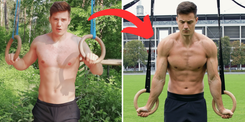
Calisthenics Body Transformation – How to Build a Strong, Lean, and Athletic Physique
Transform your body with Calisthenics! Build muscle, burn fat & achieve a shredded physique with bodyweight training. See real before & after results!
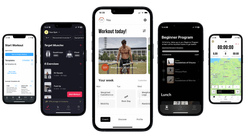
The Best Fitness Apps in 2025: Our Top 10 Recommendations
Don’t miss the best fitness apps of 2025: surprising favorites, free options, and perfect tools for your workouts. Find the ideal app today!
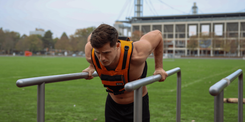
Complete Calisthenics Skills List – 40+ Exercises from Beginner to Pro
Which calisthenics skills should you learn first? And which ones will really help you progress? In this article, you’ll find a complete list of over 40 exercises – from the very basics to the toughest moves for professionals. Each exercise comes with instructions, so you can immediately integrate them into your training.
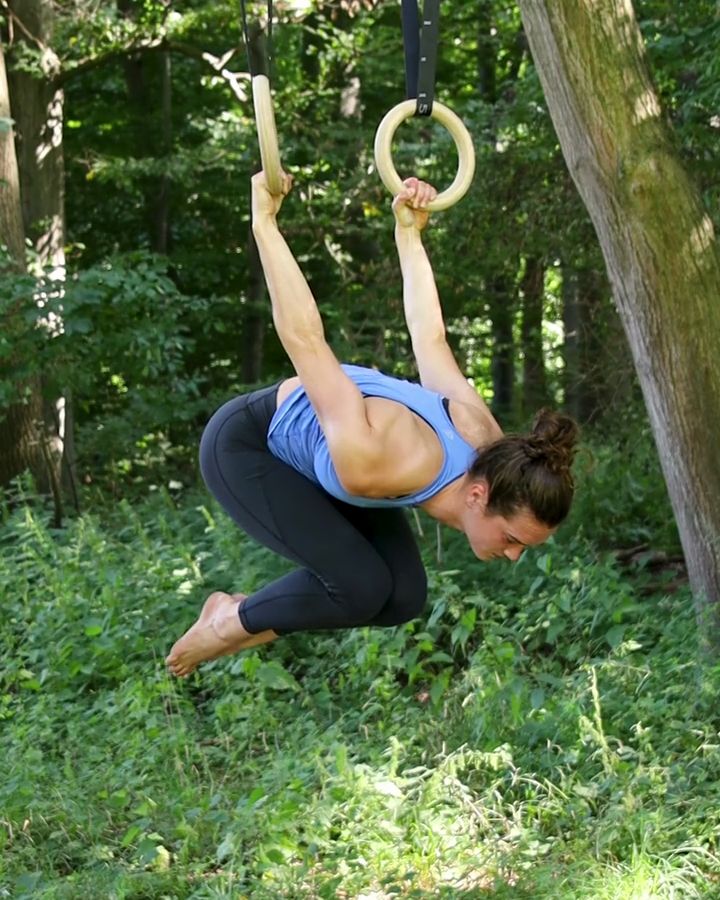
~e5724973d14549c23ea8a586b5736b36.png?alt=media)
